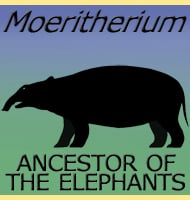In Depth
The description of the whale genus Basiloterus was only based upon the description of two lumber vertebrae. These vertebrae have been described as being close to the form of the vertebrae of Basilosaurus, though not as long. This may indicate that although similar in form, Basiloterus was quite a bit smaller than the huge Basilosaurus. Whale fossils from the Barton Beds Formation of England have also been identified as possibly belonging to the Basiloterus genus.
The genus name Basilosaurinae means ‘other king’, a reference to the relative genus Basilosaurus which means ‘king lizard’ (information for why a whale was called lizard is on the Basilosaurus page). The type species name is in honour of Dr S. Taseer Hussain.
Further Reading
- Basilosaurus drazindai and Basiloterus hussaini, New Archaeoceti (Mammalia, Cetacea) from the Middle Eocene Drazinda Formation, with a Revised Interpretation of Ages of Whale-Bearing Strata in the Kirthar Group of the Sulaiman Range, Punjab (Pakistan) - Contributions from the Museum of Paleontology, University of Michigan 30 (2): 55–81. - P. D. Gingerich, M. Arif, M. A. Bhatti, M. Anwar & W. J. Sanders - 1997.









